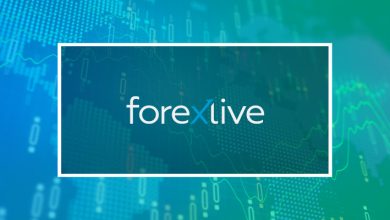Americans Earning Above the Poverty Line but Still Struggling: ALICEs

- ALICE is the acronym for a group of asset-limited, income-limited, and employed Americans.
- Most ALICEs earn too much to qualify for government assistance, but not enough to be able to live daily in the United States.
- Their existence reveals a gap in how the United States assesses economic hardship.
Imagine making just enough money at your job to not qualify for food stamps or disability benefits, but not enough to pay for rent and health care. That would make you an ALICE.
ALICE – or Asset Limited, Income Constrained, Employed – is a term coined by the United Way’s United for ALICE program to describe Americans who work and earn more than the federal poverty level for a family of four of $31,200, or $15,060 for an individual, but struggling to meet their basic needs.
Many ALICEs are workers whose wages are typically not enough to cover their bills, meaning they live paycheck to paycheck. Some are forced to sacrifice rent payments to feed themselves or take care of their children in exchange for medical appointments.
About 29 percent of the U.S. population is a member of ALICE, while 13 percent is below the federal poverty level, according to United for ALICE calculations using data from the Census Bureau’s American Community Survey and United estimates Way about a family’s needs.
Many government initiatives have attempted to help people escape poverty. Yet, as United For ALICE national director Stephanie Hoopes told BI, the federal poverty level is outdated in many ways because it doesn’t account for regional differences and the growing proportion of people’s budgets. dedicated to food. Hoopes also said less attention is paid to helping those who are better off financially but still can’t invest in their future.
For the most part, poverty rates in the United States have declined – which, on the surface, seems like good news for American workers. And while these measures could affect the most financially distressed Americans, the benefit cuts leave behind the still precarious ALICE group.
But ALICE’s share has been growing across the country over the past decade, with pandemic boom states like Montana and Idaho seeing big jumps. This comes as many Americans’ incomes have increased, but may not have kept pace with soaring inflation and housing prices.
The prevalence of ALICE programs could indicate an economic problem underlying what appears to be a robust job market: Americans are increasingly falling between the cracks of wealth and assistance, and policies are failing. fail to answer it. This contrasts sharply with the pandemic-era stimulus measures, which removed qualifications for different types of aid and provided direct stimulus measures.
“It’s hard to capture in the data the frustration, the stress, the day-to-day, having to make really bad choices,” Hoopes said. “Are you going to get your child’s medicine or are you going to have dinner tonight? Are you going to keep the electricity on? Are you going to go to daycare?”
Fewer Americans live in poverty, but more ALICEs
To qualify for SNAP, for example, families must have an income below about 138 percent of the federal poverty level, meaning a family of four must have a gross income of less than $39,000.
For Supplemental Security Income, which provides benefits to Americans with disabilities, the threshold for individuals is generally $23,652 of annual salary. Some state-to-state benefits are often available to individuals and families earning 200 to 250 percent of the federal poverty level.
United For ALICE found that inflation hit these households even harder than the average American. The Consumer Price Index, one of the main measures of inflation in the United States, includes many goods and services that ALICEs do not frequently purchase, such as dining out, sports equipment or concert tickets.
United For ALICE developed the ALICE Essentials Index which more closely tracks the survival budget of low-income households. When measuring inflation only for basic spending, the ALICE Essentials Index increased faster than the CPI. At the same time, over the past 12 years, ALICEs have fallen behind in wage increases.
“Some of our calculations showed that by falling behind like that, by just buying the same thing every year, ALICE would have had to work another whole year just to afford those things during that time,” Hoopes said.
And the rise of ALICE is felt unevenly.
“There is a disproportionate impact on Black and Hispanic households, people with disabilities, younger and older households are more likely to be below the ALICE threshold, as are single-parent households with children compared to married parents” , Hoopes said.
Indeed, many Americans are not necessarily falling into poverty, but they are increasingly inclined to become ALICEs. Hoopes said it’s a label that is increasingly resonating with workers.
“At our presentation, people will come up afterwards and say thank you for explaining why I’m having a hard time. I thought I was the problem,” Hoopes said. “Yet there is a structural explanation here and it hits people in a very real way.”
This comes as the share of Americans above the ALICE threshold declined in almost every state between 2010 and 2021, with the exception of states like Florida and Utah – both of which attracted an influx of residents richer coastal areas during pandemic migrations.
The prevalence of ALICE programs could partly explain why Americans are unhappy with good economic data – and it also undermines stereotypes about who, exactly, is struggling in the United States.
“People have a lot of stereotypes about who it is, and it’s people who are lazy or who don’t put in effort. Our data shows here’s the costs, and here’s what the jobs pay, and most of these jobs don’t pay enough to cover costs,” Hoopes said. “It’s a mathematical equation and it’s a structural problem. It’s not that people aren’t trying.”
Is your income above the poverty line, but you still struggle to afford to live on a daily basis? Contact these journalists at nsheidlower@businessinsider.com And jkaplan@businessinsider.com.
businessinsider





